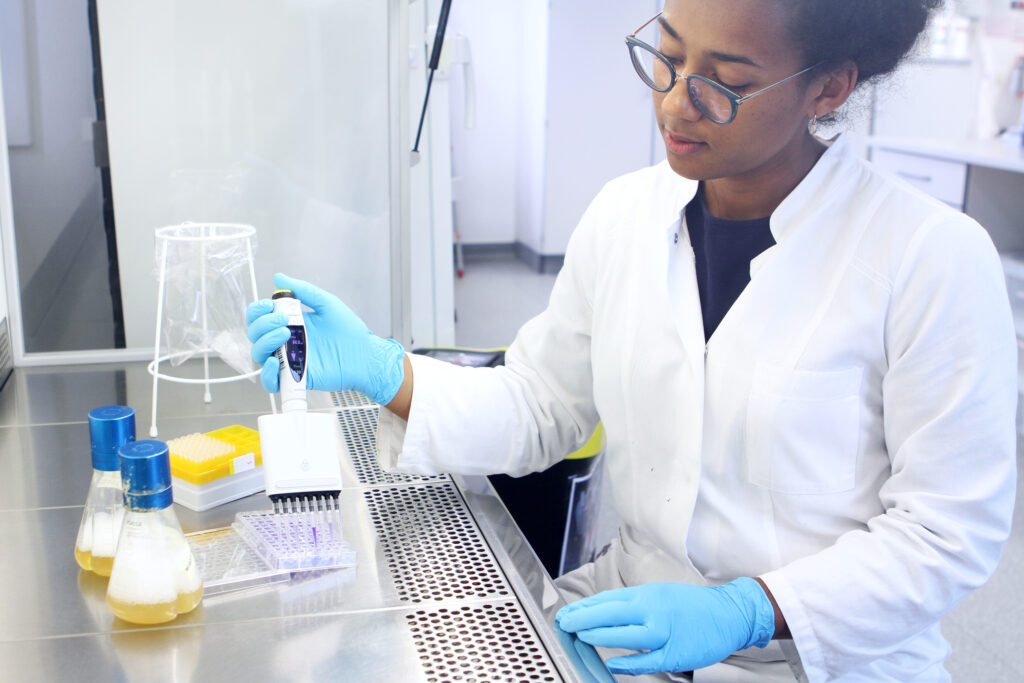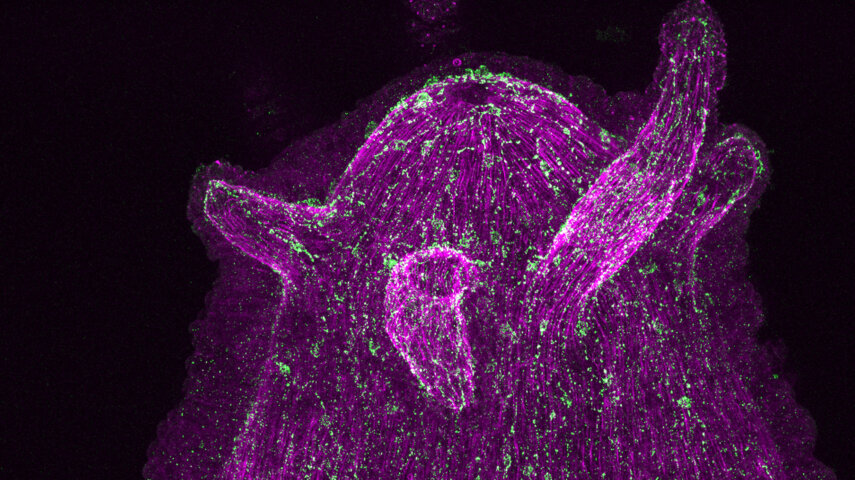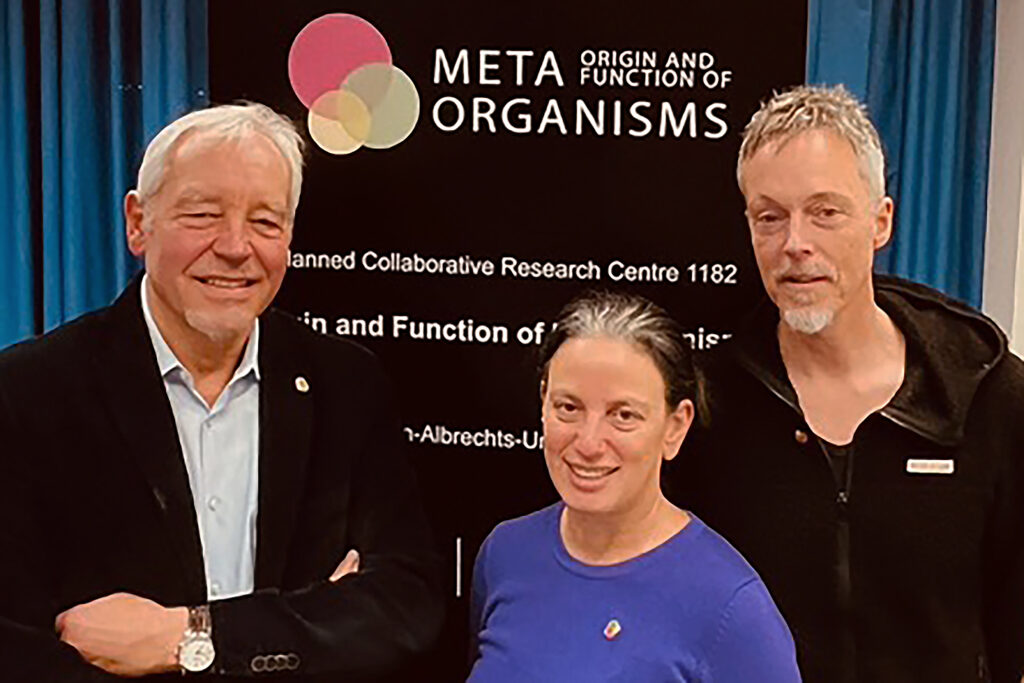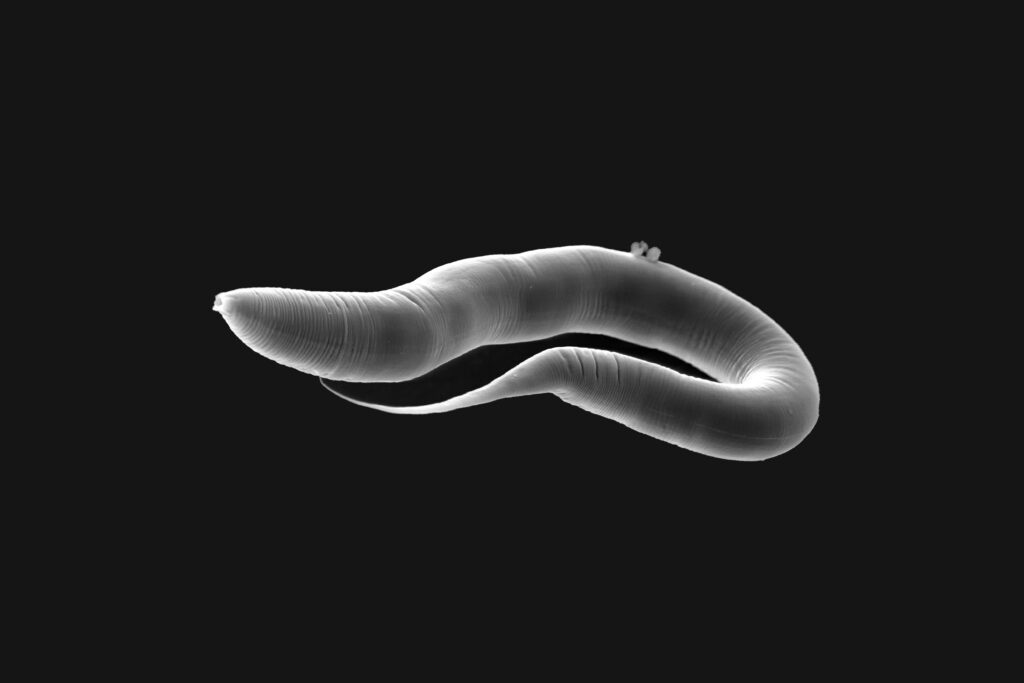A microbe’s view on metaorganisms
CRC 1182 research team proposes theoretical model on the origin of host-microbe symbioses based on microbial fitness
– Joint press release by Kiel University and the Max-Planck-Institute for Evolutionary Biology Plön –
All living organisms – from the simplest animal and plant organisms to humans – live in close association with a variety of microorganisms that colonise and form symbiotic relationships on and in their tissues. Today it is clear that many life processes can only be understood in the context of the interactions between organisms and their symbionts. The functional cooperation between host and microorganisms, which scientists refer to as a metaorganism, has thus become a focus of life science research in recent years. It is specifically addressed at Kiel University in the Collaborative Research Centre (CRC) 1182 “Origin and Function of Metaorganisms”.
To study these interactions, it is of key importance to understand how the symbiosis between microbes and host organisms develops and evolves. A common assumption about the beginning of these symbiotic relationships is that they are primarily based on an evolutionary advantage for the host. A research team from the CRC 1182 and the Max-Planck-Institute for Evolutionary Biology in Plön (MPI-EB) is now exploring an alternative view to this host-centred paradigm and asked how the microorganisms could benefit from the interaction and thus exploit hosts to optimize their fitness. Specifically, the scientists calculated how symbiosis affects the survival and reproductive success of microbes. The researchers from Kiel and Plön recently published their results in The ISME Journal.
Fitness means more than just growth
The concept of fitness, i.e. the overall reproductive success that ensures the survival of an evolutionary lineage, is often reduced to a single indicator: researchers commonly use the reproduction rate to measure how successful a living organism is in a particular habitat. For species with multi-stage life cycles, however, this view is oversimplified. “Each step of the life cycle contributes in a specific way to the overall reproductive success. This is especially true for microbes that spend part of their life cycle free-living and another part associated with a host,” emphasises the study’s first author Dr Florence Bansept, a scientist at MPI-EB in Plön. “For these microbes, it is not only evolutionarily advantageous if they can reproduce quickly. Instead, it can be equally crucial that they are able to migrate between habitats” CRC 1182 member Bansept continues.
To be able to calculate this dichotomy of evolutionary success, the CRC 1182 research team has designed a simple mathematical model. It simulates the evolution of a microbial strain that switches between an environmental habitat and a host habitat. In the process, it reproduces, migrates between habitats, and its individuals compete with each other. In the wild, for example, this kind of life cycle is experienced by various bacterial species that occur freely in the environment but also belong to the species found inside nematodes. “With our model, we were able to show that microbes can adapt to the life cycle inside and outside the host by changing either the rate of replication or the rate of migration – in other words, by adjusting their reproduction or their ability to change habitats”, Bansept explains.
Microbes at the origin of symbiosis
The new results of the CRC 1182 team thus form important conceptual foundations for better understanding the influence of selection on the origin of the close relationships between microorganisms and host organisms. “There is growing evidence that a host-centred view on symbioses is often incorrect. Considering how microbes optimize their fitness across life cycles may hold the key to a full appreciation of microbiota-host relations”, says Co-Author Professor Hinrich Schulenburg from the Evolutionary Ecology and Genetics group at Kiel University.
“We are trying to focus specifically on the microbes,” emphasises Professor Arne Traulsen, director at the MPI-EB in Plön and project leader in the CRC 1182. “We see them as highly potent drivers for the emergence of host-microbe associations, because they can evolve much faster due to their shorter generation times and larger population sizes,” Traulsen continues. To further develop this theory, he said, it is important to assess microbial fitness in all its complexity, in particular by considering all the steps of their life cycle. “This is where our modelling comes into play. It helps us to understand how the influence of natural selection acts, also beyond an advantage for the host organism,” Traulsen summarises.
Scientific Contact:
Dr Florence Bansept
Department for Evolutionary Theory
Max-Planck-Institute for Evolutionary Biology, Plön
+49 (0) 4522 763-483
bansept@evolbio.mpg.de
Prof. Arne Traulsen
Department for Evolutionary Theory, Head
Max-Planck-Institute for Evolutionary Biology, Plön
04522 763-239
traulsen@evolbio.mpg.de
Prof. Hinrich Schulenburg
Evolutionary Ecology and Genetics research group, Head
Zoological Institute, Kiel University:
+49 (0) 431-880-4141
hschulenburg@zoologie.uni-kiel.de
Press contact:
Christian Urban
Science communication „Kiel Life Science”,
Kiel University:
+49 (0) 431-880-1974
curban@uv.uni-kiel.de
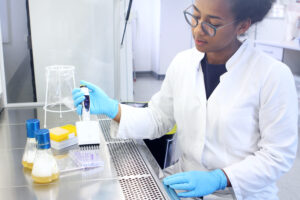
The new model of the SFB 1182 researchers helps to better understand the influence of selection on the reproductive success of microorganisms – and thus facilitates the interpretation of evolution experiments in the laboratory.
Original publication:
Florence Bansept, Nancy Obeng, Hinrich Schulenburg, Arne Traulsen (2021): Modeling host-associating microbes under selection. The ISME Journal Published on 22. June 2021
DOI: 10.1038/s41396-021-01039-0
More information:
- Collaborative Research Center 1182 „Origin and Function of Metaorganisms“, Kiel University:
www.metaorganism-research.com
- Department for Evolutionary Theory, Head
Max-Planck-Institute for Evolutionary Biology, Plön:
web.evolbio.mpg.de/~traulsen/#home
- Evolutionary Ecology and Genetics research group,
Zoological Institute, Kiel University:
www.evoecogen-kiel.de
- Opinion Paper: Evolution of Microbiota-Host Associations: The Microbe’s Perspective
DOI: 10.1016/j.tim.2021.02.005


